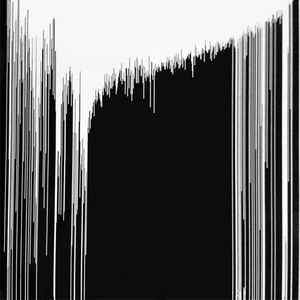In this column, Notes Toward Collaboration, we’re heading into the stacks and taking you with us. We’ll be writing about poetry and collaboration: questions of authorship, values, and processes. Like you might expect with a series of articles on collaboration, we’re thinking of this space as more discursive than authoritative, more reaching than arriving.
***
Curtis: I want to start this conversation off considering first our relationship to collaborative writing from the perspective of both a reader and practitioner of this specific type of poetics. I doubt this is exclusive to me so I will bring it up here—I know that I enjoy reading work that aligns closely to work that I also create (style, content, author, etc.). I get especially excited about collaboration in this sense because multi-authorship is the only requirement, allowing for virtually anything. I know this sort of squishy possibility is what draws me to collaborative writing, I like to see what two or more authors can come up with and I enjoy that communal spark in our own practice. What draws you to collaborative poetry and its practice? Can you point to a specific collaborative object or experience?
Laura: Curtis, I love this question. Reading Surrealist writing and learning about the exquisite corpse was one of my first experiences of writing communally—I almost always start undergrad workshops with these as an ice breaker and Alastair Brotchie’s A Book of Surrealist Games has a lot of great exercises—but if I had to point to an object or experience, I would say my introduction to collaborative writing came from hearsay. Hannah Ensor, now a writing collaborator, but then a colleague and teaching-collaborator at the New England Literature Program, told a story about being a student in a collaboration class with Anne Carson. I (maybe mis-)remember Hannah talking about one class meeting where Anne and Curie (Ann's partner and co-teacher) had piled all the desks and chairs into the middle of the room when the students arrived, said, "Okay, make something," and walked out. The idea that collaboration meant taking the teacher out of the picture, that it meant giving students a set of materials and seeing what they make of it, and that it meant moving away from the page—all of these things were exhilarating. So the idea of collaboration, for me, is intensely tangled up with the classroom: co-teaching, creative problem solving, community building, and mixing mediums. So I totally want to echo what you're saying about how collaboration allows for virtually anything. And while poetry, or writing in general allows for anything, too, the parameters of collaboration remind me of how rich the possibility is because the voices you hear while composing are not all in your own head.
![Image Description: Cover for beholden: a poem as long as the river]](https://poetry.arizona.edu/files/9781772012118.jpg)
But to take a more recent example of a collaboration that embodies all of this, Rita Wong and Fred Wah's new book, beholden: a poem as long as the river, is an intertwined set of voices that literally traces a map of the Columbia river. They come from field work and are a part of an initiative to bring awareness about the man-made impacts on the water. It's stunningly beautiful. I only wish the book were an accordion! How about you? Is there one moment, object, or book you'd point to as what draws you to the practice?
Curtis: Collaboration makes sense. I came to understand collaborative practice at a young age, specifically through music. To me, it was worth starting a creative practice to find others. I have found my best friends through music. It would make sense that my gateway to art was music. Specifically, the truly expansive noise scene and hardcore scene of New England. Lightning Bolt, one of these artists, became a favorite band of mine. Both musically and aesthetically—a duo that produced a handful of different projects; graphic novels, writings, art books, etc. Their work begged me to engage with the concept of marketable art and the beauty in its disruption—the idea that noise can be just as powerful as clarity—completely opening my ear and eye to the Avant Garde and understanding the importance of experimentation.

The Flaming Lips with Lightning Bolt is a collaborative EP by The Flaming Lips and Lightning Bolt, released in 2011.
Four songs that speak and move and
echo each other—receiving each other and twisting the mechanics of each
other’s piece(s).
To me it became a new normal I could understand, an IDEA that I could engage with: moving together, towards each other—finding moments of improvisation for the better beauty of the object. That’s what I enjoy about collaboration (and what I loved about that album)—the possibilities are almost endless, but the end goal is a constant. Compliment and generate along with the strengths of the collaborator. If Iron sharpens Iron is true, we can strip it and say “let’s play”; our most creative impulses are not out of the question, but up to be tempered and shaped by a fellow collaborator. That space is where you can be the most imaginative and (share/defer) to a partner to help bring the true essence of the idea to fruition through collaborative testing and narrative.
The interview continues—join us next time for more of the conversation as we move forward with Part 2.
READING (& LISTENING) LIST
- A Book of Surrealist Games Edited by Alastair Brotchie and Mel Gooding
- The Flaming Lips with Lightning Bolt
- beholden: a poem as long as the river by Rita Wong and Fred Wah
We aim to delve into the stacks of our local libraries and hope you will, too. We want to hear from you. What are you reading? What have you written? How do you include collaboration in the classroom? Please get in touch with us: collaborativepoetics [at] gmail [dot] com.
Curtis Emery and Laura Wetherington are poets who sometimes write poems together. You can see their collaborative work in ELDERLY, Conjunctions, and Past Simple.

